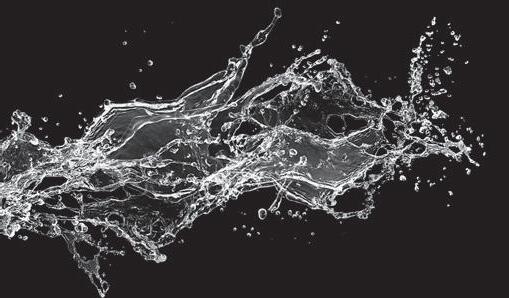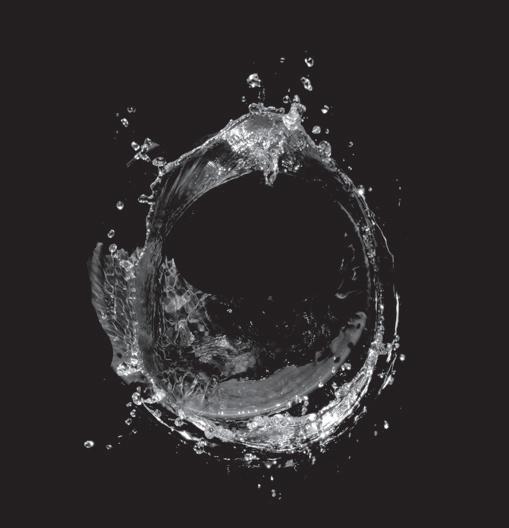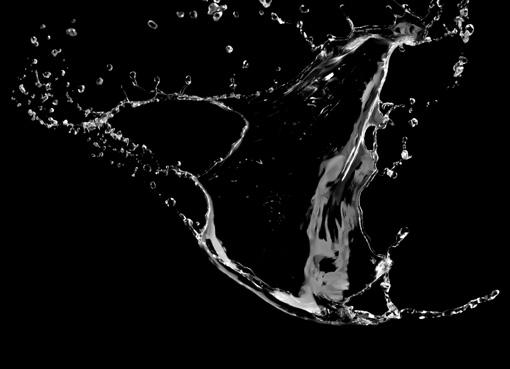
5 minute read
When crises collide: water is SA’s next “perfect storm”
South Africa is, by some accounts, already “out” of water. In an already water-scarce country, demand outstrips supply, while water treatment plants falter and the country’s climate continues to warm at unprecedented – and deadly – rates. A perfect storm, experts warn, is coming.
During the first decade of South Africa’s democracy, 13.4-million people gained access to basic water services. But a tap in a home or in the yard is no guarantee that clean water regularly flows through it. In some North West and Limpopo communities, dry pipes briefly spurt to life at 3am. Residents who do not set an alarm to collect water, go without.
In the Free State, a good storm can send desperate families scrambling to put out buckets to catch the rain. Children will even scoop up pooling water with their hands to add to the haul.
Meanwhile, the water tankers brought in by the government to fill gaps in service delivery in the province have become big business, the Mail & Guardian reported in 2022.
South Africa’s demand for water now outstrips its supply. Water, of course, can be reused – but the country’s water infrastructure can no longer supply many communities with reliable access to safe drinking water.
Wastewater treatment plants, meanwhile, dump raw sewage into waterways, probably fuelling upticks in disease.
And Eskom’s decline is deepening the problem.
“After all considerations, it was discovered that we had allocated about 98% of all the water available in the country. Effectively we became water-deficient in 2002,” explains Turton. He warns that South Africa is transitioning to a fundamentally waterconstrained economy. Meanwhile, sewage management systems are collapsing and the country threatens to outstrip its capacity to process safe drinking water.
Turton concludes: “The South African water sector is entering the early phase of a ‘perfect storm’ driven by the convergence of significant drivers over which no [one] individual has any control.”
Sa Uses More Water Than It Has
Experts have spent more than a decade measuring the water South Africa has and comparing it to what it needs to fill the nation’s kettles, water its crops and mine its riches.
By 2002, what South Africa used in water was already outstripping what it had, says Dr Anthony Turton, professor at the Centre for Environmental Management at the University of the Free State. In 2003, scientists believed South Africa possessed 53-billion cubic metres of water. Today, Turton says better modeling and declining rainfall have placed that figure at about 49-billion cubic metres.
But when it comes to water, it is not just about how much you have — it’s about how good it is. And what South Africa has, it is not very good at safeguarding. In the Department of Water and Sanitation’s latest drinking water report, more than 60% of water supply systems did not meet water quality standards.
Meanwhile, 40% or more of water in Johannesburg and eThekwini is lost to leaks and theft before it ever reaches consumers.
“South Africa is a water-scarce country, so we’re obviously affected by the semi-arid to arid climate,” explains Dr Anja du Plessis, a University of South Africa water expert. “But what we’re seeing now is what’s called ‘economic water scarcity’. In places like Johannesburg, you have the water supplies; however, you are experiencing shortages because of dilapidated infrastructure.” She continues: “[That] infrastructure is now collapsing under loadshedding.”
Similarly, the most recent audits of wastewater treatment plants found that 100 were so poorly run that they posed a serious risk to public health and the environment.
For instance, the South African Human Rights Commission found that broken Gauteng wastewater treatment plants have dumped so much raw sewage into the Vaal River that the waterway is now polluted beyond any acceptable measure. The Commission noted that raw sewage from these same plants had also found its way into nearby schools and homes.
Our health turns on the health of rivers like the Vaal or the Orange, Turton says.
“We used to dilute our pollution into the watercourses,” he says. “But we have so overloaded the rivers with five-billion litres of sewage daily that we have lost our dilution capacity.”
He continues: “Today, the average citizen drinks water from the tap that has been processed from a sewage-contaminated river through technology that is broken and unable to safely process sewage to drinking quality standards. This affects everyone.”

Unpurified river water in many parts of South Africa is used to water crops. A 2021 study funded by the Water Research Council found high levels of bacteria transmitted in the waste of animals and humans on surveyed fresh vegetables in Cape Town and Tshwane. The findings held true whether vegetables were purchased in supermarkets or from hawkers.

Pipes For Jobs
Efforts to fix South Africa’s water system have been hampered by weak local capacity and deep corruption. Municipalities, which Du Plessis says bear the biggest responsibility for clean water provision in the country, do not have the ability to fix the system. Each year, budgets to safeguard water supplies go unspent.
“The inability to spend results in the misfortune of the current ageing infrastructure,” writes Department of Water and Sanitation Minister Senzo Mchunu in the department’s latest annual report. “Where some of the infrastructure may not be old, the dismal and inadequate maintenance, particularly of municipal infrastructure, remains an Achilles heel.”
When municipalities can spend money to maintain or expand infrastructure, the department notes, projects can be waylaid by protests by local business forums and communities demanding jobs before projects can be completed.
The department has pointed out that there are maintenance backlogs of more than R35.5-billion.
Water In A Hotter World
The average annual temperature in South Africa has increased by at least one degree celsius during the last 50 years, almost twice the global average, according to a 2021 study published in the journal Environmental Research. Temperatures in the country are projected to continue to rise at a greater rate than the global average. A child born in the next 20 years could grow old in a country that is up to six degrees hotter than average temperatures nearly a century before, the study warns. And heat can be deadly.
The South African Medical Research Council’s Dr Caradee Wright says the recent deaths of farmworkers in the Northern Cape should be a warning. Emerging research also suggests that hotter temperatures may be linked with some types of birth defects, particularly holes in foetuses’ hearts. And as more homes go without steady access to water, the public health threats only grow, Wright warns.
“When you don’t have continuous water supply, you store water,” she says, “and when you store water, you immediately start to run into trouble.” In many homes, families store water in open-air containers, often dipping in the same shared cup to collect water. With each cupful, new germs are introduced into bins that are rarely cleaned.
In an environment like this, diarrhoeal disease – which can be deadly in small children, the elderly and people with weaker immune systems – can spread like wildfire. And the country’s health system – like its water infrastructure – may not be prepared to cope with new waves of disease that accompany a hotter, more water-scarce world.
“Our healthcare systems and other structures that we have in place are not fully functioning for the majority of the country,” she says. “We’re starting from a bad baseline, and I can’t see how we’re going to cope.” S








